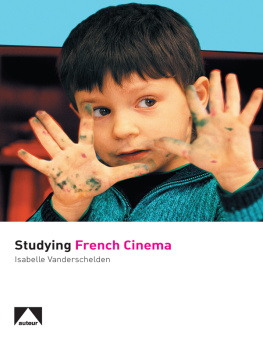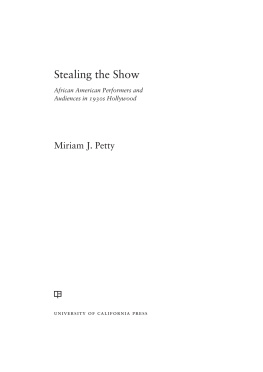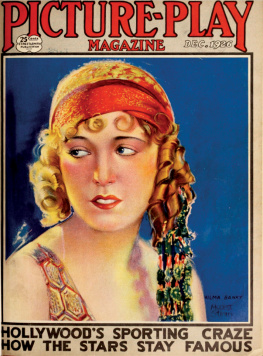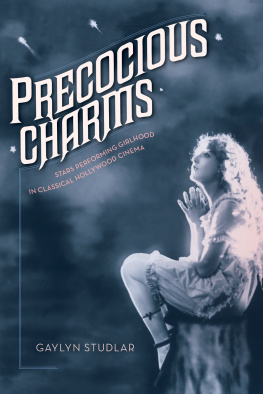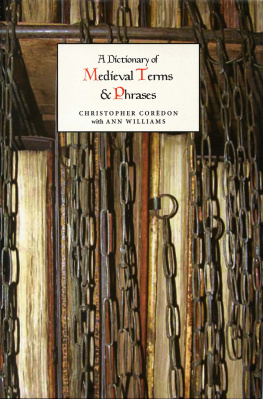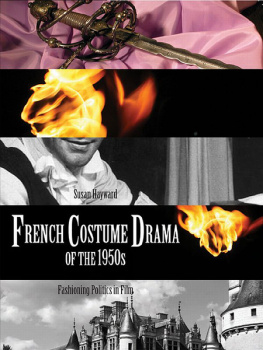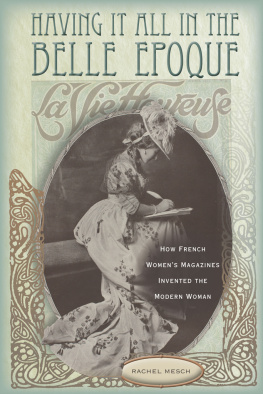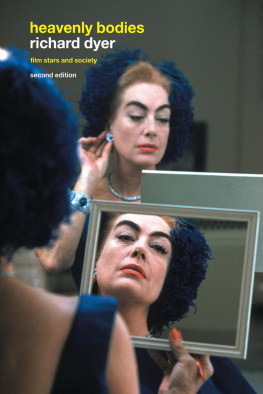
Jonathan Driskell is Lecturer in Film and Television Studies at Monash University Malaysia. He is the author of Marcel Carn (2012).
This is a succinct and well-organised analysis of female stardom in the 1930s, focusing on Annabella, Danielle Darrieux and Michle Morgan. Jonathan Driskell uses the tools of star studies to tease out the similarities and differences between the three stars []. The major arguments of the book are clearly stated, and [...] summarized in the excellent and pithy conclusion.
Professor Phil Powrie, Dean of the Faculty of Arts and Human Sciences, Chair of the British Association for Film, Television and Screen Studies and Chief General Editor of Studies in French Cinema, University of Surrey
This well-written, useful book [] is particularly valuable in its reassessment of canonical 1930s films through comparing them to other, less well-known, but equally as intriguing and telling films such as Club de femmes or Anna-Marie. It also challenges an ideal of 1930s French cinema located in a masculine imaginary, demonstrating the importance of ideas about modern femininity and particularly the Front Populaires contribution to changing ideas about gender roles.
Fiona Handyside, Senior Lecturer,
University of Exeter
THE FRENCH SCREEN GODDESS
FILM STARDOM AND THE MODERN WOMAN IN 1930S FRANCE
Jonathan Driskell
Published in 2015 by
I.B.Tauris & Co Ltd
London New York
www.ibtauris.com
Copyright 2015 Jonathan Driskell
The right of Jonathan Driskell to be identified as the author of this work has been asserted by him in accordance with the Copyright, Designs and Patents Act 1988.
All rights reserved. Except for brief quotations in a review, this book, or any part thereof, may not be reproduced, stored in or introduced into a retrieval system, or transmitted, in any form or by any means, electronic, mechanical, photocopying, recording or otherwise, without the prior written permission of the publisher.
Every attempt has been made to gain permission for the use of the images in this book.
Any omissions will be rectified in future editions.
International Library of the Moving Image 2
ISBN: 978 1 78076 700 0
eISBN: 978 0 85773 566 9
A full CIP record for this book is available from the British Library
A full CIP record is available from the Library of Congress
Library of Congress Catalog Card Number: available
To my parents, Robert and Sue
Contents
List of figures
6Autoportrait (Tamara in the Green Bugatti). 2014
Tamara de Lempicka. Licensed by Museum Masters International
List of tables
Acknowledgements
This book is based upon my PhD thesis Female Cinematic Stardom in 1930s French Film, which I completed at Kings College London in 2009. I would first of all then like to give very special thanks to my PhD supervisor Ginette Vincendeau for the enormously helpful advice and encouragement she has given me for the duration of this project.
Other people who have given valuable assistance, in a variety of ways, include: Marc Alizon, Maurizio Cinquegrani, Richard Dyer, Markos Hadjioannou, Frank Krutnik, Leong Wai Lun, Hope Liebersohn, Mariana Liz, Julie Lobalzo-Wright, Christopher Meir, Laura Mulvey, Victor Perkins, Genevive Sellier and Lawrence Webb. I am also grateful to my colleagues at Monash University Malaysia and to my editors at I.B.Tauris, Anna Coatman and Philippa Brewster.
I would like to thank the Arts and Humanities Research Council for funding my research, including additional financial support for a six-month research trip to Paris. I would also like to thank the School of Arts and Social Sciences, Monash University Malaysia, and the Association for Studies in French Cinema for providing me with funding to pay for some of the books images.
I am very grateful to the staff at the following libraries for their assistance: the British Film Institute, the Bibliothque nationale de France, the University of Warwick library and the Kings College Maughan library.
Finally, a huge thank-you must be given to Louis Bayman, Olga Kourelou, Anna Puthuran, Christopher Driskell and most of all to my parents, Robert and Sue Driskell.
Introduction
Most French film stars of the 1930s started their careers in the theatre; many pursued parallel careers, filming in the studios during the day and performing on stage at night. This partly came about because the demands of the new sound medium meant that performers with skill in vocal delivery were needed, but producers also saw it as a way to capitalise upon Frances rich and extremely popular theatre culture: performers came from music venues (caf-concert, music hall and vaudeville) as well as the dramatic stage (the popular boulevard theatre and the more elite theatre of the Odon and the Comdie-Franaise). The stardom that is the focus of this book was different: these stars did not begin their careers on stage and throughout the 1930s had almost no involvement with the theatre. While this may seem like a minor issue, this book argues that it had profound implications. Although outnumbered by the stars who came from the stage, the stars who bypassed the theatre were extremely successful, appearing in many of the decades most celebrated and popular films and, as I will argue, they exemplified new developments that would have great significance for the future.
In order to distinguish between these two forms of stardom, I refer throughout this book to the stars from the theatre as theatrical stars and those who entered the cinema directly as cinematic stars. This terminology is adopted for convenience and should not obscure the fact that the cinematic stars possessed some theatrical elements and that the theatrical stars, as film stars, were also in many ways cinematic. Although there were male examples of cinematic stardom, it was a form that was largely dominated by women. For this reason, the book investigates the important female manifestation of this type of stardom, focusing on three key examples, Annabella, Danielle Darrieux and Michle Morgan, who according to a number of sources were the most popular female stars of the 1930s. In exploring this topic, the book takes its place within two main areas of study: 1930s French cinema studies and star studies two areas I shall now briefly outline.
A key rationale for writing this book is that work on 1930s French cinema has traditionally been dominated by studies of the decades aesthetic masterpieces, its genius filmmakers and the celebrated film movement known as poetic realism a type of film specialising in lyrical depictions of humble, working-class milieu. Such an emphasis is evident from a number of general studies of the decades cinema However, work on the periods stardom has been scarcer.
Indeed, it was some time before Hollywood stardom was considered worthy of study. While there were a considerable number of fan-oriented books on stars, it was not until Edgar Morins Les Stars and especially Richard Dyers Stars that film stardom received close academic attention.
Studies dealing specifically with French stardom have also begun to emerge. Again, there has been a long history of hagiographical work on French stars as well as some insightful pieces by particular film critics, the most famous being Andr Bazins discussion of the Gabin myth.


